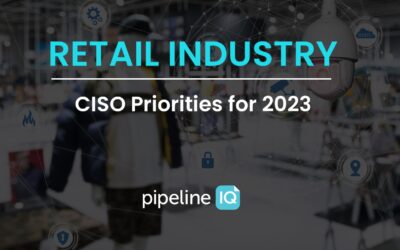
Running ABM programs on key accounts in the energy sector? The first step is understand some of strategic imperatives happening in this industry to be more relevant in your account targeting and 1:Few ABM campaign.
1. Understanding the terms “downstream” and “upstream”.
“Downstream” and “upstream” refer to different stages of the production and distribution process. Upstream activities refer to the exploration and production of oil and gas. This typically involves activities such as drilling wells, extracting oil and gas from the ground, and transporting it to refineries for processing. Downstream activities, on the other hand, refer to the refining and distribution of oil and gas products. This typically involves activities such as refining crude oil into products like gasoline and diesel, as well as transporting and selling these products to consumers.
2. Internet of Things (IoT) and big data.
Oil and gas companies are increasingly using IoT to improve their operations and enhance their decision-making. IoT sensors and other monitoring devices can be used to collect data on the performance of oil and gas wells, pipelines, and other equipment. This data can be used to identify potential problems, optimize production, and reduce downtime. Big data analytics can thenbe used to analyze large sets of data collected from IoT sensors and other sources. This can help energy companies identify trends, predict equipment failures, and improve the efficiency of their operations. IoT and big data can also be used to improve safety and environmental responsibility. For example, sensors can be used to monitor air and water quality, and alert companies to potential risks.
3. Protecting against cyber threats.
The oil and gas industry is vulnerable to attacks from hackers and other cyber criminals. These attacks can range from simple acts of vandalism, to more sophisticated attempts to steal sensitive data or disrupt operations. Many oil and gas companies operate complex and critical infrastructure, such as pipelines and drilling equipment. These systems may be vulnerable to attack if they are not properly secured or updated.
4. Maximizing production, efficiency and environmental responsibility.
Oil and gas companies are always looking for ways to maximize production and efficiency in order to maximize profits. This often involves investing in new technologies and techniques to extract more oil and gas from existing wells, as well as exploring and drilling for new deposits. Overall, upstream activities are considered more capital-intensive and risky. Oil and gas companies are also under increasing pressure to operate in a safe and environmentally responsible manner. This often involves investing in safety measures to protect workers and communities, as well as implementing technologies and practices that minimize the environmental impact of drilling and extraction. Lastly, oil & gas companies are under mounting geopolitical pressure to advance renewable energy technologies, such as solar or wind power.
5. Managing Costs.
The oil and gas industry is subject to a wide range of costs, including the cost of raw materials, labor, and transportation. Companies must carefully manage these costs in order to remain profitable. Downstream activities are typically more stable and predictable. As a result, oil and gas companies may have different strategies and priorities for their upstream and downstream operations. One tactic is to reduce exploration and production costs through the use of advanced technology, such as horizontal drilling and hydraulic fracturing. Reducing waste and optimizing supply chains remain a key focus area.
Who are the key players in the U.S.:
ExxonMobil is the largest of these companies, with a market capitalization of over $430 billion. It is a major player in both the upstream and downstream segments of the oil and gas industry, with operations spanning the globe. Chevron is the second-largest oil and gas company in the US, with a market capitalization of around $360 billion. It is also involved in both upstream and downstream activities, with a focus on exploration and production in North America and the Asia-Pacific region. ConocoPhillips is the third-largest oil and gas company in the US, with a market capitalization of around $168 billion. It is primarily focused on exploration and production, with operations in North America, Europe, and Asia. Occidental Petroleum and Phillips 66 are both smaller, with market capitalizations of around $57 billion and $47 billion, respectively. Occidental Petroleum is focused on exploration and production, while Phillips 66 is primarily involved in downstream activities, such as refining and marketing.
For deep-dive intelligence on key prospects in the energy sector or other strategic verticals you are targeting with ABM, contact us at sales@pipelineIQ.com.





